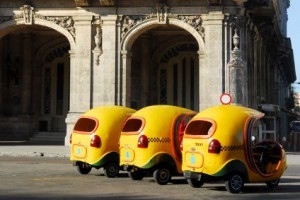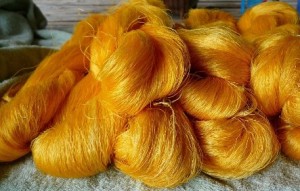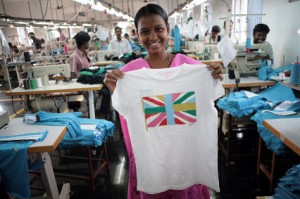 This article is the first of a series of two that makes a case for why small fashion SMEs may be a thought leader for large fashion companies on how to tackle environmental sustainability. This first part sets the scene and presents 2 community initiatives based. The upcoming second part will present 2 further case studies: one based on a co-operative model, and one following the ‘traditional’ designer driven studio approach.
This article is the first of a series of two that makes a case for why small fashion SMEs may be a thought leader for large fashion companies on how to tackle environmental sustainability. This first part sets the scene and presents 2 community initiatives based. The upcoming second part will present 2 further case studies: one based on a co-operative model, and one following the ‘traditional’ designer driven studio approach.
Official figures state that the textile industry globally gives employment to some 30 Mio. people. At the same time, we know that in India alone an estimated 90% percent of the workforce is part of the informal or unorganised sector – meaning: they do not appear in any official statistics – totalling at an estimated minimum of 30 Mio. ‘casual’ and home workers. Many of these are in fact making a living within the production cycle of the textile industry – the world’s second largest industry, right after agriculture.
The Issue
These numbers should raise our attention to an important characteristic of the global textile and accessories business that goes usually unnoticed: the industry is in reality several factors larger than the official figures suggest. And: SMEs and the cottage industry are a substantial, but normally unaccounted for, player.
They are – unexpectedly perhaps – as a conglomerate a pivotal variable in all efforts surrounding environmental sustainability. Individually, these SME or cottage unites certainly small if not tiny. However, taking into account their total numbers and acknowledging their key role in absorbing – by means of subcontracting – seasonal production fluctuations and production bottlenecks of industrial high-volume manufacturing sites, the impact they invariably have onto the environment becomes evident.
Why is that so? Many of these (informal) SME will be made responsible to deal with orders that originally have been designed for production in highly optimised factories with, for example, effluent treatment systems, dye dispensing automated processing units, or waste recycling processes. Yet, they are nothing but flexible man-power used to ease the pinch when the mother factory cannot meet a deadline, or doesn’t want to fulfil a specific order themselves.
Cash-strapped and more often than not lacking the experts and expertise the larger factories have access to, the resulting overall negative environmental impact is impressive: pollution of already scarce local water resources in their communities, improvised use and disposal of potentially carcinogenic substances – not only dyes -, overload of the local power supply through (old) electric equipment, and fumes of power generators required during the more or less frequent power cuts.
But – what options are there at hand? How can environmental sustainability be introduced into these small and micro units? Further, how can it be ensured that the associated skills sets are unique, yet valuable to the global fashion industry as a whole?
Going back in time in order to go forward, may be the solution and answer to this riddle. The remainder of this text will be use to introduce three different types of approaches in achieving this, all from South-East Asia. Similar models and example are of course equally available from Latin America, Africa, and even Europe or the US. The mentioned case studies will make it clear that the opportunities are many, but that determined back-integration of such ideas into the context of industrial production is long overdue.
Community initiatives case study: Assisi Garments & Sawang Boran


Next: Part 2: The co-operative model & the design studio approach.
—
This article has the first of a series of two that makes a case for why small fashion SMEs may be a thought leader for large fashion companies on how to tackle environmental sustainability. This first part sets the scene and presents the 2 case studies based on community initiatves. The upcoming second part will present 2 case studies: one based on a co-operative model, and one following the ‘traditional’ designer driven studio approach.

